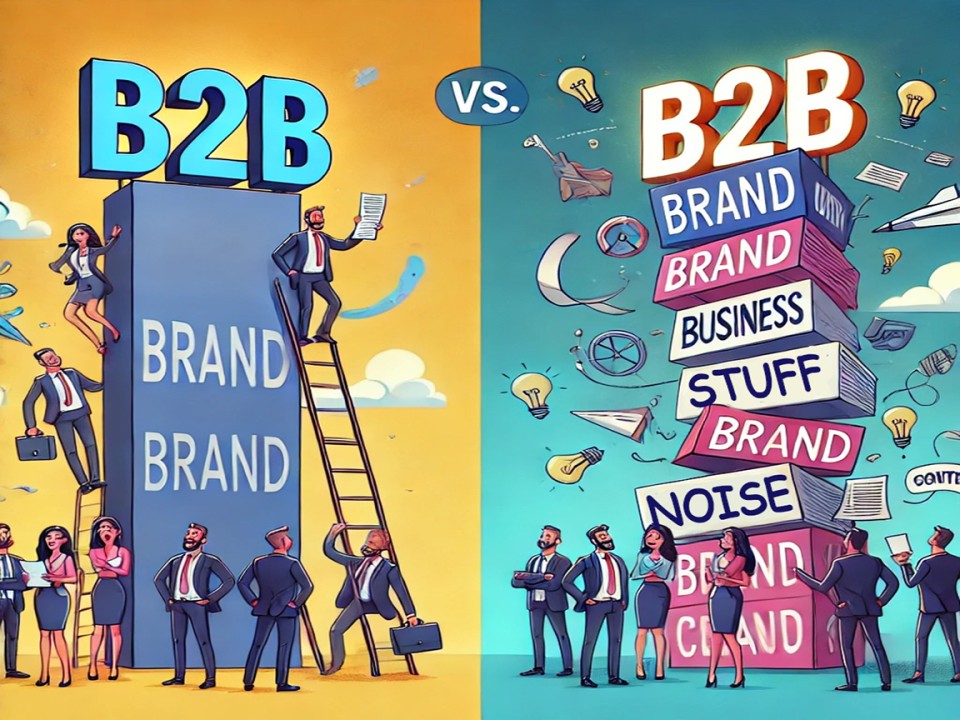
When it comes to B2B branding, most people think of logos, catchy slogans, and those perfectly polished PowerPoint templates. But let’s face it—building a successful B2B brand goes far beyond aesthetics. It’s about crafting a brand identity that doesn’t just say, “We exist!” but boldly declares, “We’re essential, and here’s why!”
In a world where 77% of B2B marketers say branding is critical for growth (Content Marketing Institute, 2023), the stakes couldn’t be higher. So, how can you position your brand to stand out in the sea of “synergies,” “solutions,” and “value propositions”? Let’s dive into brand positioning, messaging, and consistency—and add a little humor to what can often be a very buttoned-up conversation.
Brand Positioning: The Art of Being Unforgettable
Imagine walking into a conference room where every company claims to “transform” something. It’s a buzzword buffet, and no one remembers what you actually do. This is why brand positioning is your secret weapon.
What is Brand Positioning?
At its core, positioning is about owning a unique spot in your customer’s mind. In B2C, this might look like a soda brand screaming “refreshment” or sneakers shouting “cool.” For B2B, it’s more subtle but just as powerful. You’re not just selling software; you’re selling reliability. You’re not just offering logistics; you’re offering peace of mind.
How to Nail It:
- Understand Your Audience’s Pain Points: Start by asking, “What keeps our customers up at night?” Then, position your brand as the warm, cozy blanket that solves those issues. Bonus points if you can wrap it in a compelling story.
- Find the White Space: Don’t compete on the same turf as everyone else. If 10 SaaS companies are shouting “efficiency,” you shout “human connection.” Stand where no one else is standing.
- Be Simple, but Specific: Consider Slack’s positioning when it launched: “Be less busy.” Four syllables, but it resonated deeply. The lesson? Say what you mean, and mean what you say.
Messaging: Say It Loud, Say It Smart, Say It Often
Let’s play a game. Imagine your B2B messaging is a dating profile. Are you the vague one who lists “enjoys long walks on the beach” (yawn)? Or the intriguing one who says, “Let’s disrupt your workflow—in the best way possible”? Messaging is your brand’s personality, so make it count.
The Golden Rules of B2B Messaging:
- Clarity Over Cleverness: While it’s tempting to throw in a pun or two (guilty as charged), clarity should always come first. Customers want to know what you do, why it matters, and why they should trust you.
- Tailor It for Different Audiences: The CFO doesn’t care about the same things as the IT manager. Create tailored messaging for every stakeholder in your buying cycle.
- Consistency Across Channels: Whether it’s a tweet, a whitepaper, or a booth at a trade show, your messaging needs to sound like it’s coming from the same voice. Disjointed messaging is like sending mixed signals on a date—no one ends up happy.
Brand Consistency: The Unsung Hero of Trust-Building
According to a study by Lucidpress, consistent branding increases revenue by 33%. Think about that: by simply being consistent, you could be one-third richer (or at least your company could). Consistency isn’t just a buzzword; it’s the glue that holds your brand together.
Consistency Checklist:
- Visual Identity: Does your website match your brochures? Does your LinkedIn page look like your email templates had a long conversation about fonts and colors? If not, fix it.
- Tone and Voice: If you’re snarky on Twitter, don’t be stiff and formal in your blog posts. Unless your brand’s personality is “bipolar,” aim for one consistent tone.
- Content Strategy: A consistent content strategy builds trust over time. If you post once in a blue moon, don’t expect your audience to stick around. Remember, 80% of B2B decision-makers cite “trust” as a deciding factor when choosing vendors (Demand Gen Report, 2022).
Differentiating in a Crowded Market: Easier Said Than Done? Not Really
With over 60% of B2B buyers conducting in-depth research before engaging with a vendor (Gartner, 2023), standing out isn’t just an option—it’s a necessity. Differentiation is about more than just having a fancy logo; it’s about the experience your brand creates.
Ways to Differentiate:
- Thought Leadership: Publish content that solves real problems for your customers. Don’t just recycle the same tired tips—offer fresh, actionable insights. Want proof? Companies that publish thought leadership see 3X higher brand trust (LinkedIn, 2022).
- Customer Experience: If your competitors take weeks to respond to inquiries, be the brand that responds in hours. Experience sticks.
- Storytelling: Humans are wired for stories. Tell the story of your brand, your customers, and the problems you solve. Make it authentic, and people will remember you.
Final Thoughts: Build, Manage, Succeed
Building a successful B2B brand isn’t a sprint; it’s a marathon with a bit of parkour thrown in for good measure. Position yourself wisely, message with intention, and stay consistent. Do that, and you’ll not only stand out—you’ll dominate.
And remember, in a world where every B2B brand claims to be “innovative,” sometimes all it takes to be different is to be real. Whether it’s with humor, empathy, or boldness, find your edge and own it. Because in the end, the best brands aren’t just remembered—they’re trusted.
Now go forth and brand boldly—just leave the buzzwords at the door.
